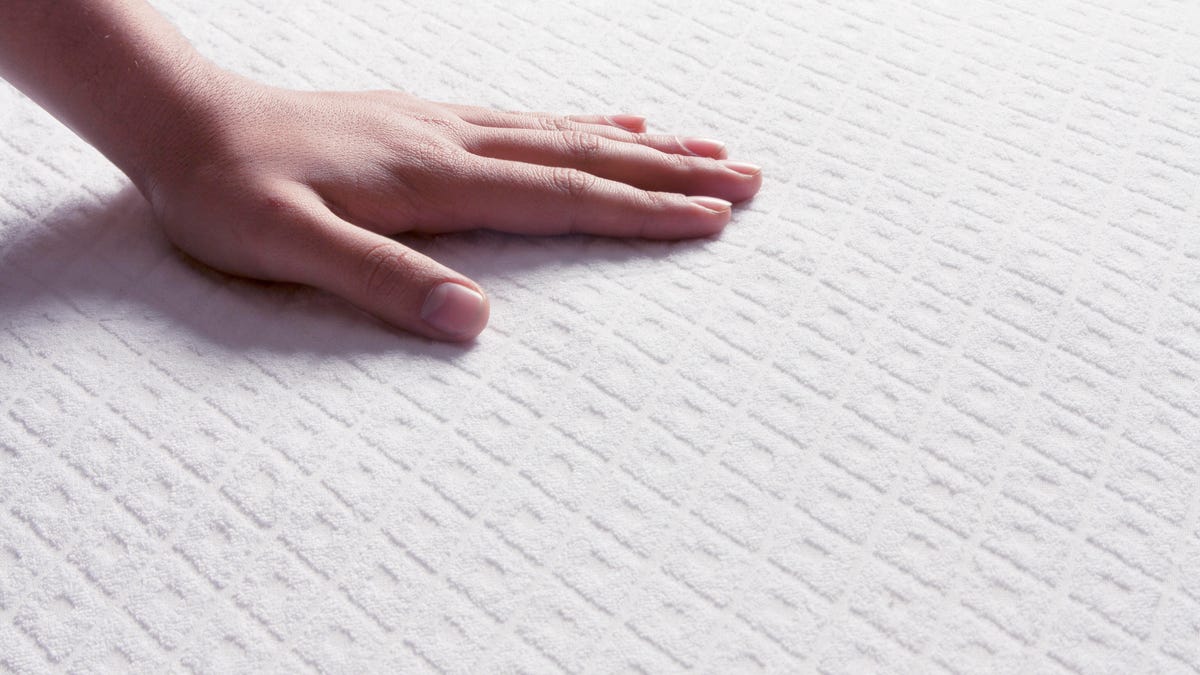 Why You Can Trust CNET
Why You Can Trust CNET Cooling Mattress Materials That Actually Work, Our Sleep Expert Reveals
Some mattress brands say their mattresses have cooling effects, but few actively cool you down. Here's what to know before buying a cooling mattress.

Many mattress brands say they offer a cooling mattresses that can keep your body cool while you sleep. However, many mattresses that claim to have cooling technology fall short of expectations. Is it just too good to be true?
It certainly can be frustrating when you purchase a mattress hoping it will provide cooling relief, only to be disappointed that it doesn't work. The good news is that there are a handful of beds that live up to their cooling claims. Read on to learn the materials you should look out for, the red flags to avoid and the best cooling mattresses I've seen so far.
The truth about cooling mattresses
As a mattress tester, I have personally experienced the feel of over 100 different beds, and only a handful of them have been able to walk the walk. Let's say you have 10 mattresses in front of you. Six of them claim to be cooling, but only two will be effective in doing so.
However, that isn't to say that the mattress brands that manufacture these beds are lying to you. While the wording is misleading, brands do add materials to mattresses that help them regulate temperature better than traditional beds. So, while they aren't cooling, per se, they do sleep cooler than the bed your mom and dad had when they were younger. Unfortunately, when you're a hot sleeper, temperature regulating materials don't quite get the job done.
The best cooling materials
Phase-change materials
Beds like the Cocoon Chill have phase-change materials that are surprisingly effective at absorbing your body heat and making you feel less warm. In my experience testing beds, phase-change materials tend to work better than foams infused with cooling gels or graphite (more on that below).
Special proprietary materials
Some of the beds that stand out most are the ones in the Purple catalog -- the Original Purple and Purple Hybrid mattresses. The brand came up with a revolutionary mattress material, unlike any foam you've ever seen before. The material resembles a jelly play toy or a Dr. Scholl's insole. Paired with the Purple Grid design, it's great at preventing heat retention and promoting airflow.
Cooling covers
Beds like GhostBed Luxe have "Ghost Ice" fabric and cooling fibers in the cover to make a bed physically feel cold-to-the-touch. It's pretty cool tech (no pun intended), and a feature you don't find on many mattresses. I've found these cooling beds incredibly effective and immediately bring relief to help promote a more comfortable sleeping environment.
Read more: Best Cooling Toppers
Temperature regulating materials
I define temperature-regulating materials as a material that helps prevent a mattress from heating up but doesn't actively cool you. Often, if a bed only contains one type of temperature-regulating material and no cooling cover, it will sleep temp-neutral.
Infused foams: Some mattresses like the Layla mattress include foams infused with special materials that absorb heat away from your body and disperse it throughout the bed. This often includes copper-infused, graphite-infused or gel-infused foam.
Open-cell foam: The Tuft and Needle and Casper mattresses are made with open-celled foam that has tiny air bubbles throughout. This allows for better airflow than dense memory foam, making it sleep cooler than a traditional foam mattress.
Perforated foam: Beds like the Avocado Green mattress are made with latex foam that have perforations throughout the layer. Latex foam promotes increased airflow, preventing a bed from retaining heat and sleeping more temp-neutral than hot.
Moisture-wicking materials: Keep a wary eye out for cooling covers made with "moisture-wicking" materials. While these do help regulate temperature and wick away your sweat during the night, it won't make the bed a true cooling mattress.
Do cooling pillows and toppers work?
Yes and no. The same logic behind cooling mattresses applies to pillows and toppers. There are many bedding products that claim to promote a cool feel, but you really need to keep an eye out for those special materials mentioned above for a true cooling product. I have seen several cooling pillows that are effective, including GhostPillow and the Purple Harmony, and a few cooling toppers such as the GhostPillow or TempurPedic models. So, they are out there -- you'll just have to do some research to find the products that will actually work for you.
Tips on sleeping cooler at night
Besides a cooling mattress, topper and pillow, there are other tips and tricks you can use to help you sleep cooler at night (without having to purchase anything).
- Freeze your pillows and sheets before you go to bed. They won't stay cool all night, but they'll be icy long enough for you to doze off to sleep.
- Stop the heat at its source and use blackout curtains during the day to prevent your bedroom from getting too hot.
- Take advantage of fans and create a cross-draft in your bedroom.
- Use moisture-wicking pajamas that are lightweight so they carry away sweat and promote airflow.
- Remember that hot air rises -- if you have a two-story home, try sleeping on the first level.

